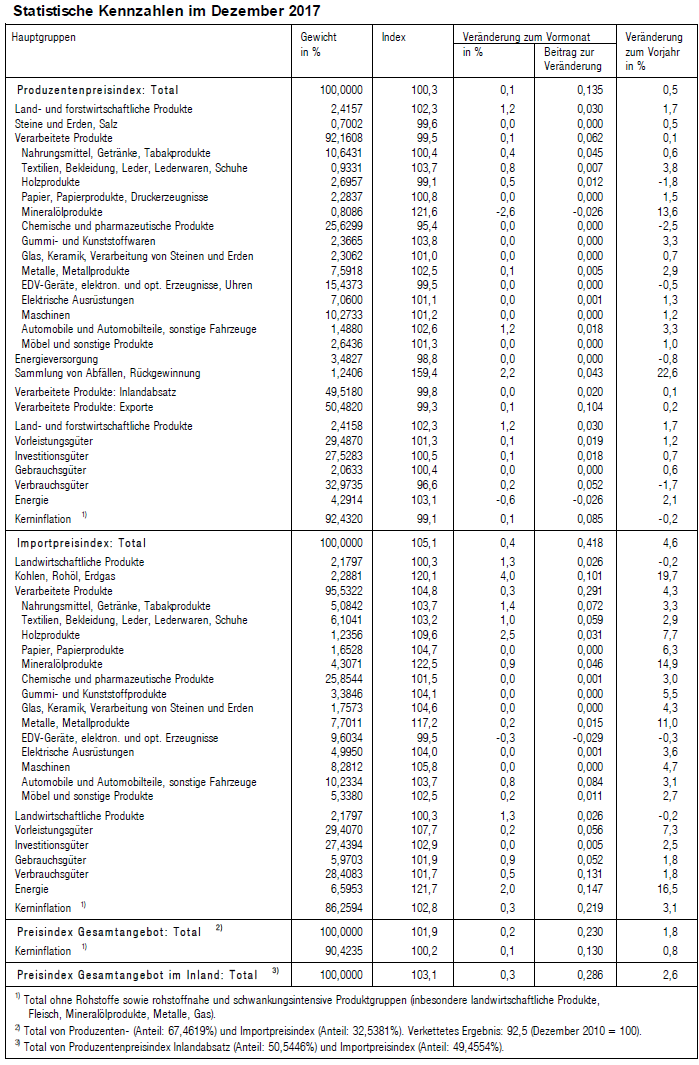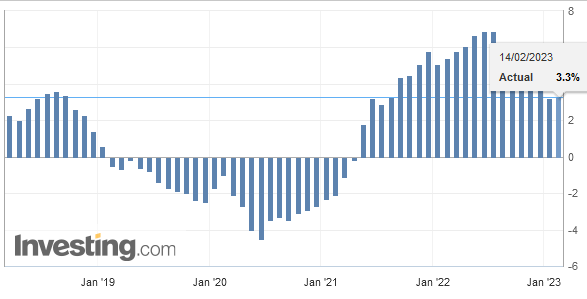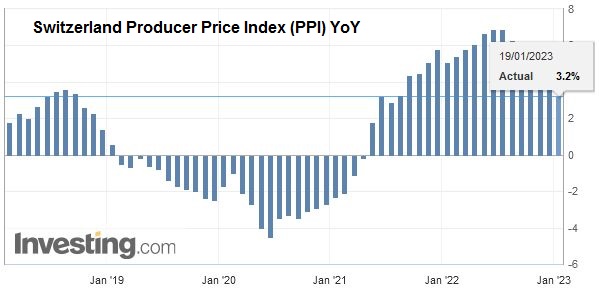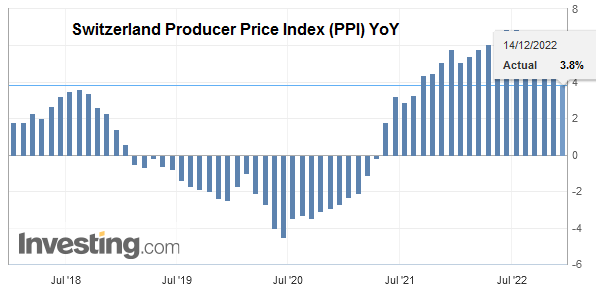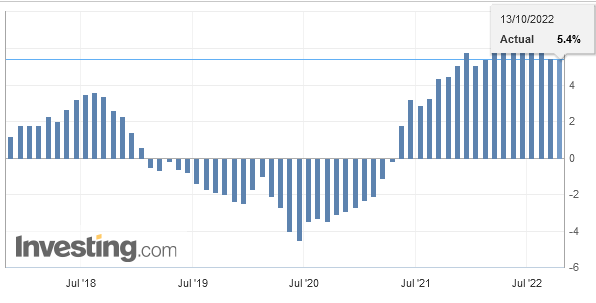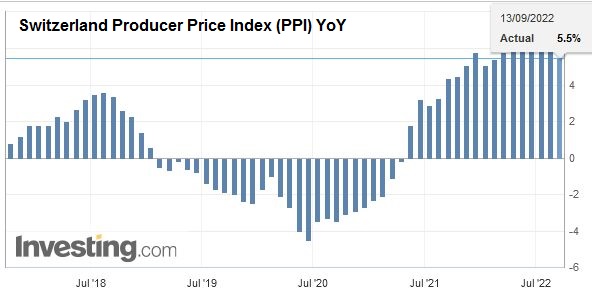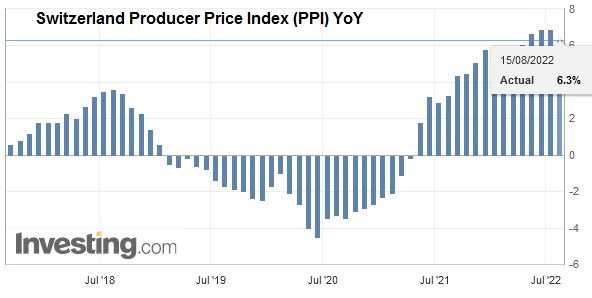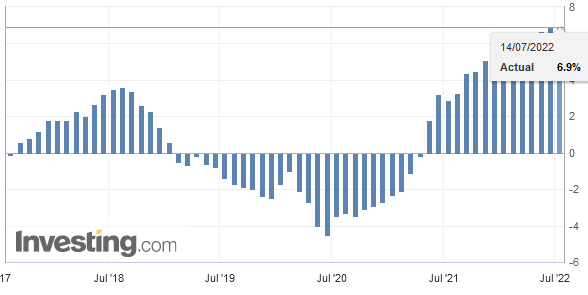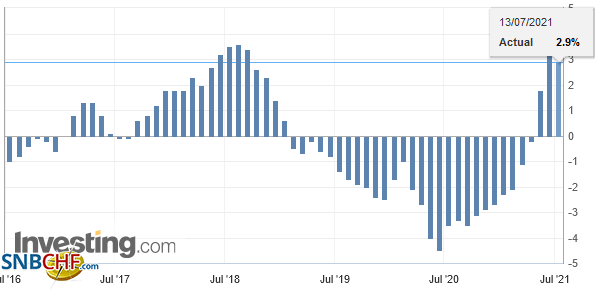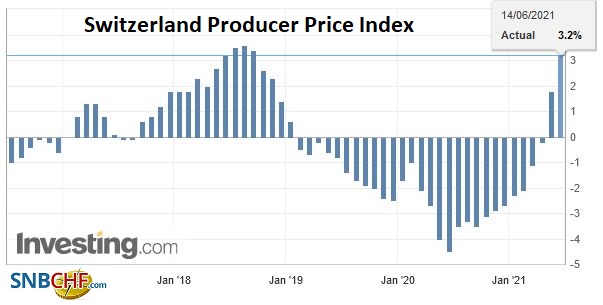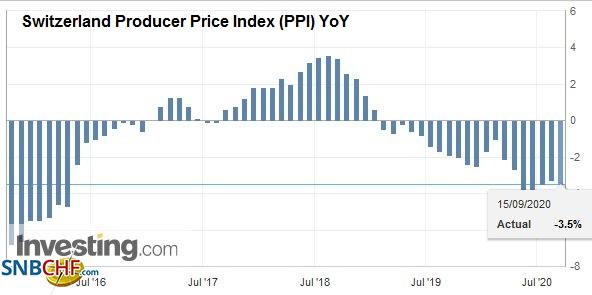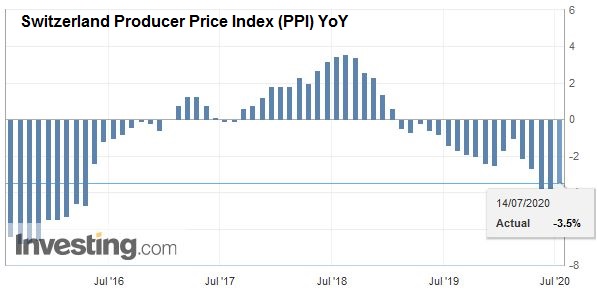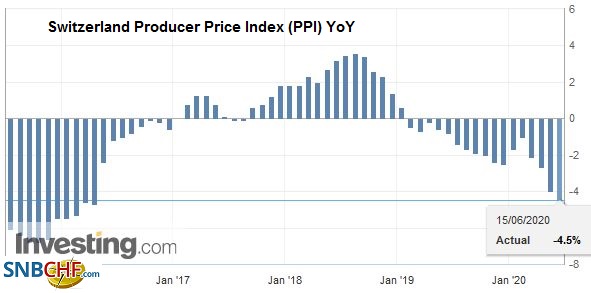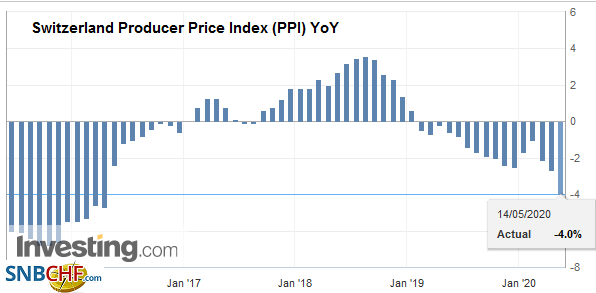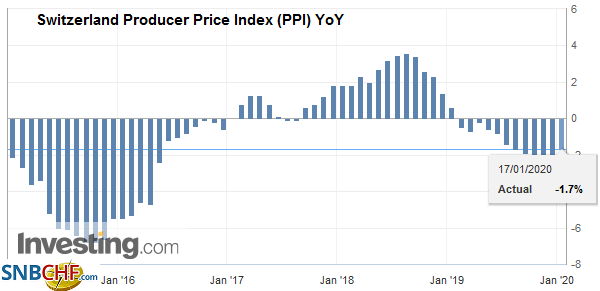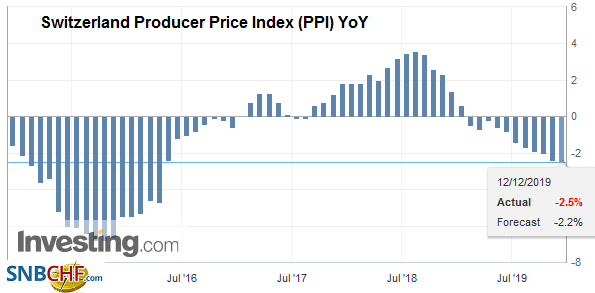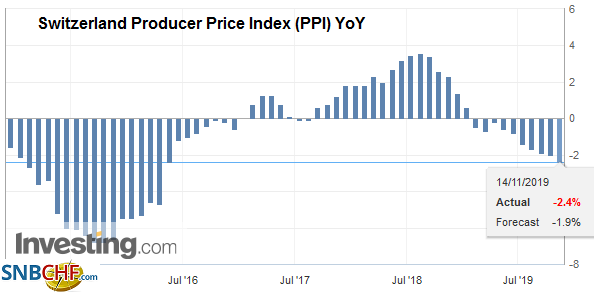The Producer Price Index (PPI) or officially named “Producer and Import Price Index” describes the changes in prices for producers and importers. For us it is interesting because it is used in the formula for the Real Effective Exchange Rate. When producers and importers profit on lower price changes when compared to other countries, then the Swiss Franc reduces its overvaluation. The Swiss PPI values of -6% in 2015 (see below), compared to -3% in Europe or -1% in the U.S., diminished the overvaluation. In 2017, however, producer prices are rising again – in both Europe and Switzerland. See more in Is the Swiss Franc overvalued?
Producer and Import Price Index in November 2017
From the data release of Swiss Statistics:
| Neuchâtel, 19 January 2018 (FSO) – The Producer and Import Price Index rose in December 2017 by 0.2% compared with the previous month, reaching 101.9 points (December 2015=100). Compared with December 2016, the price level of the whole range of domestic and imported products rose by 1.8%. The average annualised inflation rate in 2017 was 0.9%. These are some of the findings from the Federal Statistical Office (FSO). |
Switzerland Producer Price Index (PPI) YoY, December 2017(see more posts on Switzerland Producer Price Index, )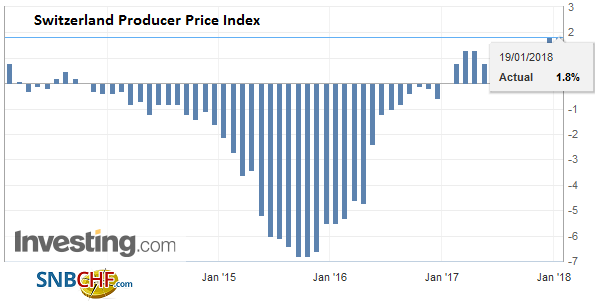 Source: Investing.com - Click to enlarge |
Download press release Producer and Import Price Index with average annualised inflation rate of 0.9%
German Text:
Produzenten- und Importpreisindex mit durchschnittlicher Jahresteuerung von 0,9 ProzentNeuchâtel, 19. Januar 2018 (BFS) – Der Gesamtindex der Produzenten- und Importpreise stieg im Dezember 2017 gegenüber dem Vormonat um 0,2% und erreichte den Stand von 101,9 Punkten (Basis Dezember 2015 = 100). Im Vergleich zum Dezember 2016 stieg das Preisniveau des Gesamtangebots von Inland- und Importprodukten um 1,8%. Die durchschnittliche Jahresteuerung lag im Jahr 2017 bei 0,9%. Dies geht aus den Zahlen des Bundesamts für Statistik (BFS) hervor.. Die durchschnittliche Jahresteuerung 2017 entspricht der Veränderungsrate zwischen dem Jahresmittel 2017 und dem Jahresmittel 2016. Das Jahresmittel berechnet sich als arithmetischer Durchschnittswert der 12 Monatsindizes des Kalenderjahres. Im Jahr 2017 betrug die durchschnittliche Jahresteuerung 0,9%. Der Anstieg ist primär auf höhere Preise für Mineralölprodukte, Metalle und Metallhalbzeug sowie Schrott zurückzuführen. Während die Preise der inländischen Produzenten im Durchschnitt stabil blieben, stiegen die Importpreise um 2,7%. Im Jahr 2016 hatte die durchschnittliche Jahresteuerung –1,8% betragen, im Jahr 2015 –5,4%. Für den Anstieg des Produzentenpreisindexes gegenüber dem Vormonat waren insbesondere die höheren Preise für Schrott verantwortlich. Im Importpreisindex hingegen registrierte man steigende Preise vor allem für Erdöl und Erdgas, Mineralölprodukte und Motorräder. |
Tags: newslettersent,Switzerland Producer Price Index










